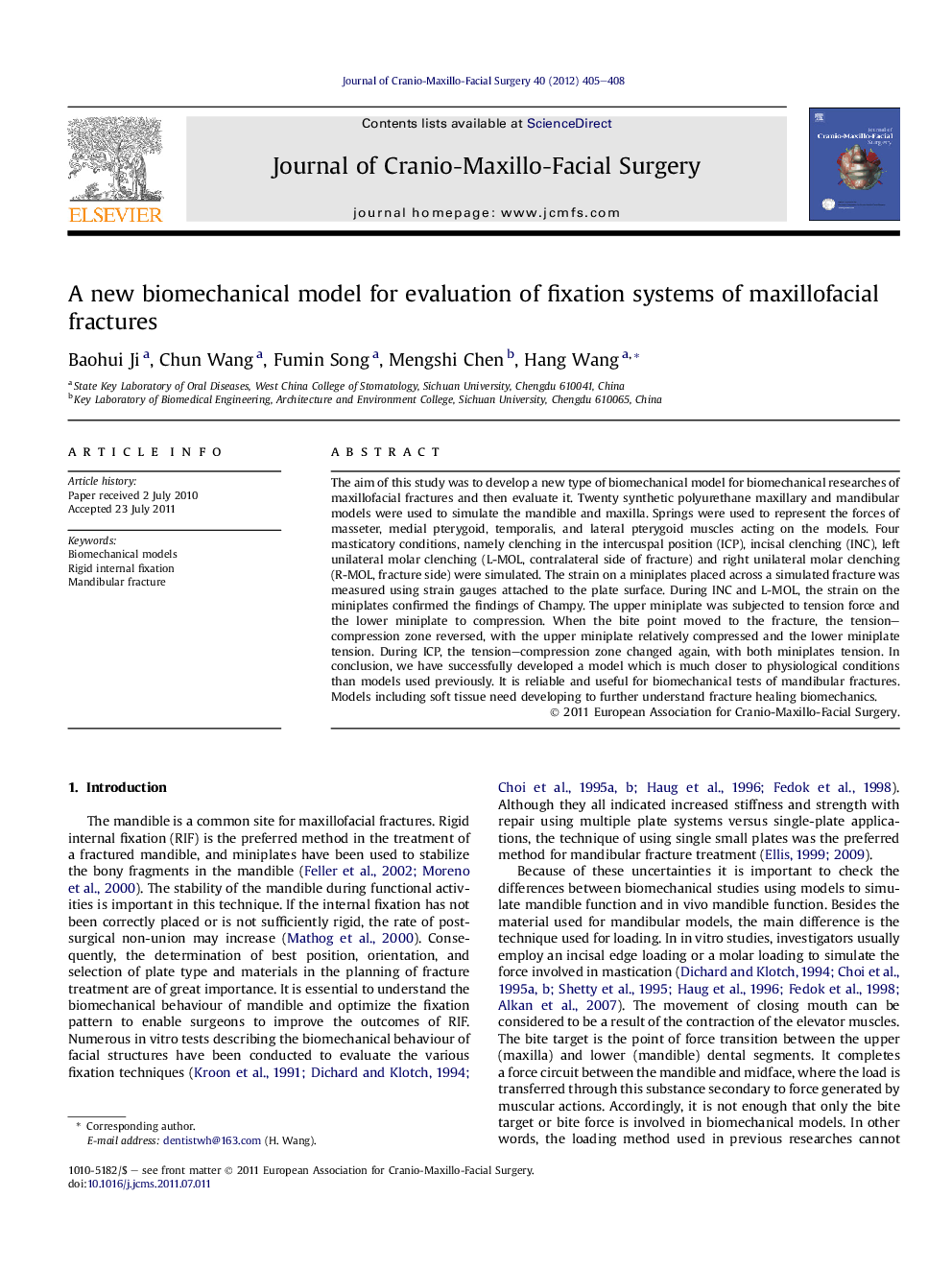| Article ID | Journal | Published Year | Pages | File Type |
|---|---|---|---|---|
| 3143474 | Journal of Cranio-Maxillofacial Surgery | 2012 | 4 Pages |
The aim of this study was to develop a new type of biomechanical model for biomechanical researches of maxillofacial fractures and then evaluate it. Twenty synthetic polyurethane maxillary and mandibular models were used to simulate the mandible and maxilla. Springs were used to represent the forces of masseter, medial pterygoid, temporalis, and lateral pterygoid muscles acting on the models. Four masticatory conditions, namely clenching in the intercuspal position (ICP), incisal clenching (INC), left unilateral molar clenching (L-MOL, contralateral side of fracture) and right unilateral molar clenching (R-MOL, fracture side) were simulated. The strain on a miniplates placed across a simulated fracture was measured using strain gauges attached to the plate surface. During INC and L-MOL, the strain on the miniplates confirmed the findings of Champy. The upper miniplate was subjected to tension force and the lower miniplate to compression. When the bite point moved to the fracture, the tension–compression zone reversed, with the upper miniplate relatively compressed and the lower miniplate tension. During ICP, the tension–compression zone changed again, with both miniplates tension. In conclusion, we have successfully developed a model which is much closer to physiological conditions than models used previously. It is reliable and useful for biomechanical tests of mandibular fractures. Models including soft tissue need developing to further understand fracture healing biomechanics.
